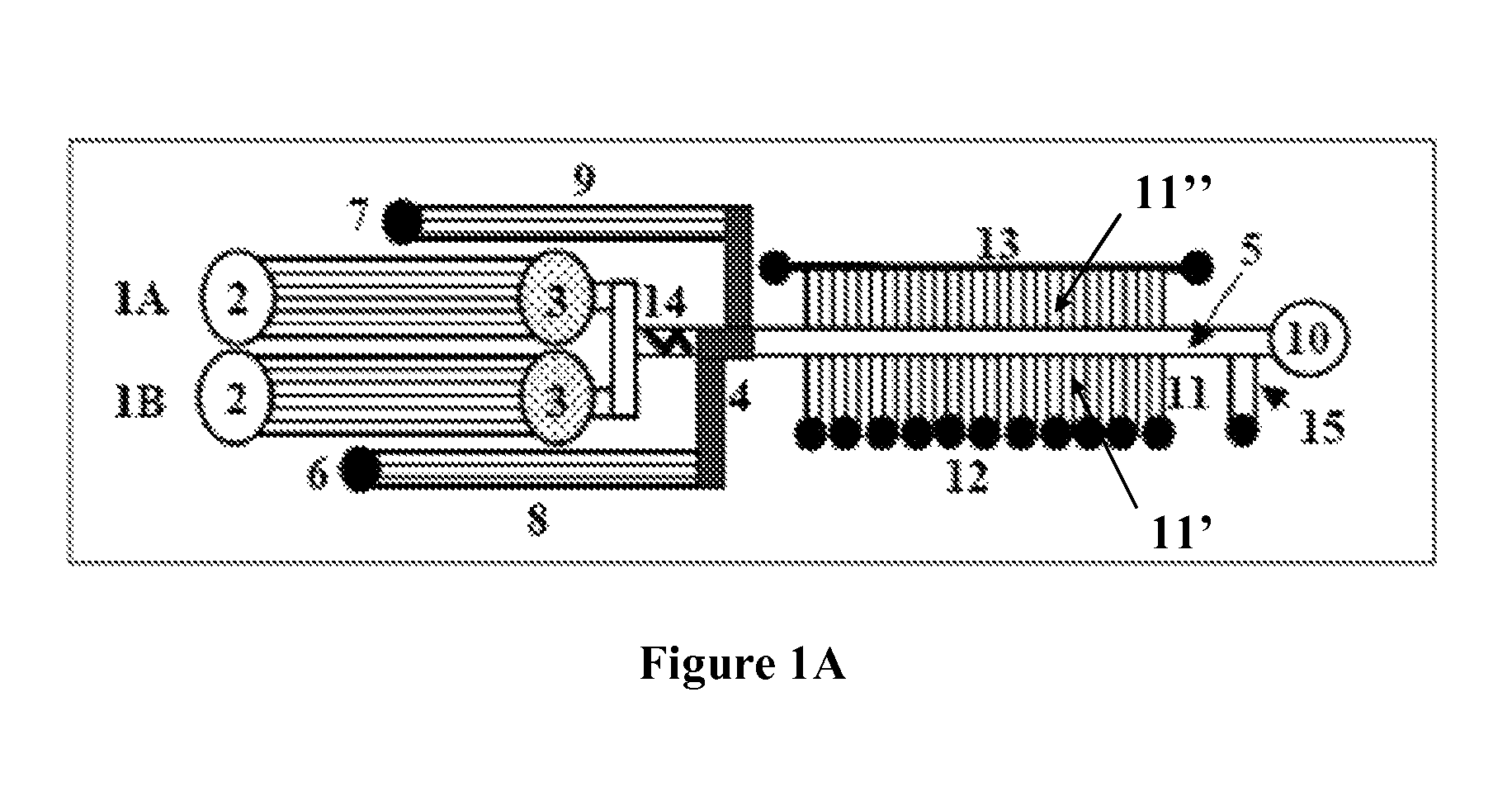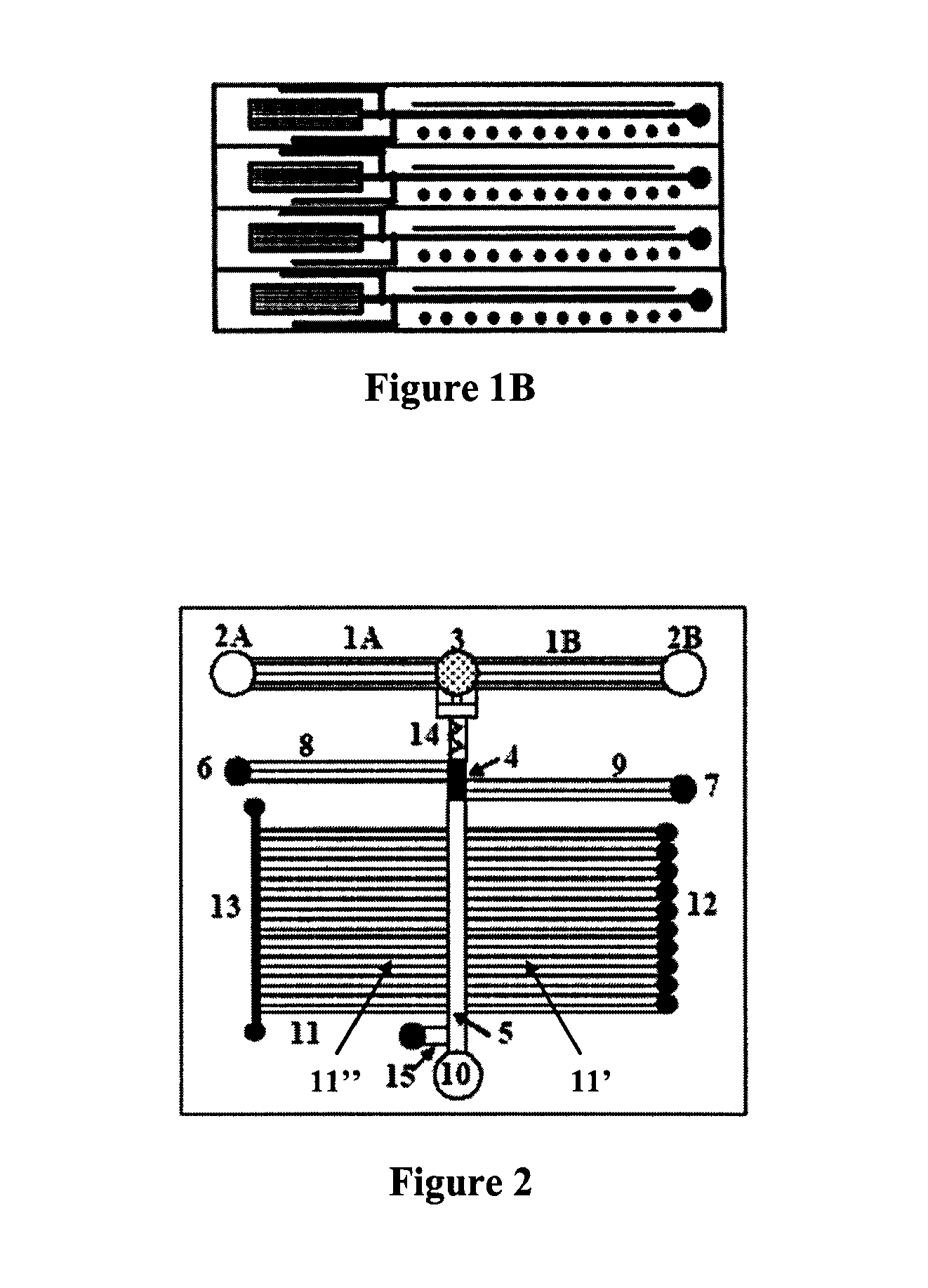Microfluidic devices and methods facilitating high-throughput, on-chip detection and separation techniques
a microfluidic device and microfluidic technology, applied in the field of high-throughput microfluidic devices and methods, can solve the problems of complex sample itself, large dynamic range of proteins present, and difficult analysis of proteomic samples, etc., to achieve fast sample separation, improve high-throughput analysis, and fast sample separation
- Summary
- Abstract
- Description
- Claims
- Application Information
AI Technical Summary
Benefits of technology
Problems solved by technology
Method used
Image
Examples
example 1
Microfluidic LC-MALDI Chips
[0061]The first generation of microfluidic-MALDI chips was constructed and tested with fluorescent dyes. A region of an empty separation channel that is intersected by a multitude of 1.5 μm deep channels for MALDI sample collection is shown in FIG. 11A. In the present design, there are 10 microreservoirs for sample collection, the intersecting nanochannels are placed 50 μm apart, and each 2 mm section of the LC separation channel is connected through 40 nanochannels to a sample collection reservoir. Alternative designs may incorporate a large density of nanochannels that enable the connection of sub-millimeter separation channel regions to the MALDI reservoirs. FIG. 11B shows the microfluidic chip filled with a fluorescent dye. The elution of the LC separation channel content through the intersecting nanochannels into the MALDI reservoirs is shown in FIG. 11C. The chip was filled with a fluorescent dye solution and the sample rinse channel and collection r...
PUM
| Property | Measurement | Unit |
|---|---|---|
| depth | aaaaa | aaaaa |
| length | aaaaa | aaaaa |
| length | aaaaa | aaaaa |
Abstract
Description
Claims
Application Information
 Login to View More
Login to View More - R&D
- Intellectual Property
- Life Sciences
- Materials
- Tech Scout
- Unparalleled Data Quality
- Higher Quality Content
- 60% Fewer Hallucinations
Browse by: Latest US Patents, China's latest patents, Technical Efficacy Thesaurus, Application Domain, Technology Topic, Popular Technical Reports.
© 2025 PatSnap. All rights reserved.Legal|Privacy policy|Modern Slavery Act Transparency Statement|Sitemap|About US| Contact US: help@patsnap.com



